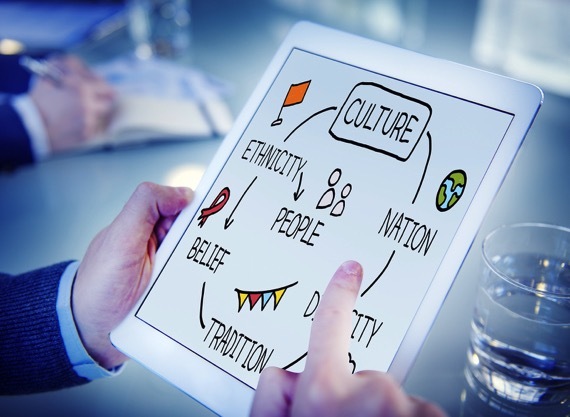There's a ton of research showing that a happy employee is a more engaged employee (and more productive, too), and technology can play a big role. As I've mentioned previously, the future of work is here. Companies operating with a 21st century mindset know that technology and work culture are interlinked, with one driving the other.
Apart from the typical communication tools, technology goes much further, even allowing us to reward workers in the moment. Gamification, intra-company social networks and external applications all play a role when it comes to maintaining the health and well-being of employees.
Gamification and Employee Engagement
Gamification refers to programs where employees compete for points or achievements with game mechanics. Just like playing a video game or using a mobile gaming app, players are rewarded according to pre-determined rules. These games activate psychological triggers, which lead to positive behavior changes. Gamification is gaining a foothold in business due to contributions from insights in behavioral economics and other disciplines studying human interactions and motivation.
There isn't an out-of-the-box or one-size-fits-all solution to gamification at work; it needs careful thought and design. Plus, even though gamification helps engage employees, there are several issues that can make this type of engagement less effective:
- Habituation. Employees felt less rewarded for achievements over time. New elements need to be added to refresh the gaming mechanics.
For obvious reasons, injecting gamification into your work culture requires careful planning and monitoring for it to be an effective tech tool.
Intra-company Social Networks and Employee Engagement
Tools like Jive, Slack and Yammer allow for transparent conversations between employees. At a glance, one can view what is happening in any department and contribute, allowing for open and seamless collaboration.
At its best, an intra-company social network lets communication flow without having to navigate through the hierarchy. It also eliminates unnecessary meetings because employees are able to communicate via a messaging platform without having to meet in person.
For internal social networks to work though, it is vital that company executives commit to also using the platforms. Research by the Altimeter group shows that less than 50 percent of employees are using their company's internal communication platforms. Employees revealed to Altimeter if the company's leadership wasn't using them, they wouldn't either.
Supervisors may feel threatened by the closing of the gap between themselves and the employees that report to them. However, they need to view the company social network as an opportunity to motivate and inspire, and open up lines of communication.
Engagement Begins with Praise and Lasts with Tech
Harvard Business School research revealed the one action which will, on its own, lead to better behavioral outcomes: well-timed praise. They found that when individuals are given compliments after successfully completing tasks, they experience "best-self activation." This means they connect the act with the perception of working at their top performance and it reinforces their self-image in a positive way.
It's why Stark President Todd Vande Hie eschews performance reviews at his high-end fitness company. "I don't do employee reviews. I look for opportunities; when you have conversations with people that are impactful the timing is extremely important because it adds to the emotion and it creates situations they never forget."
When you offer praise at the right moment, you provide employees incentives to repeat those actions. You also reinforce their positive self-regard by reminding them of their capabilities to impact others and boost their abilities for resiliency. It is a simple concept with far-reaching results for employee engagement and retention.
Project management tools like Basecamp and Asana will keep supervisors apprised of their team's actions, allowing them to focus on and congratulate both individuals and teams for successes and accomplishments of the day.
To make this even more transparent, tools like IDoneThis tracks team activities across various platforms and the entire team can see what they accomplished together. Teammates are also able to offer up their own compliments and show gratitude for others.
Improving work culture begins with awareness and transparency, and ushers in a new era of employee engagement. Harnessing technology will drive better communications between employees and lead to more meaningful work, whether it is through game mechanics, internal communication networks or tools that track and reward accomplishments. Keeping employees engaged and happy in their jobs is the most cost-effective way to improve productivity, employee retention and ultimately, a company's success.
